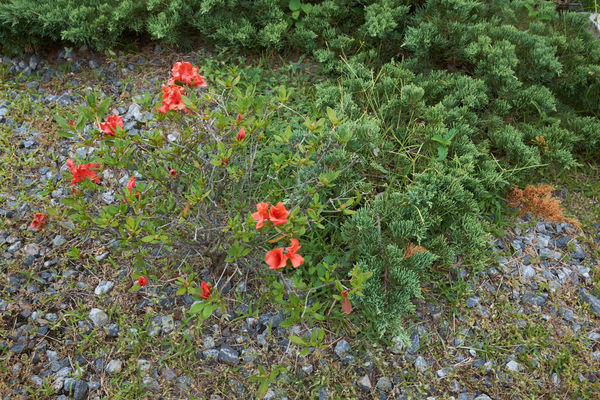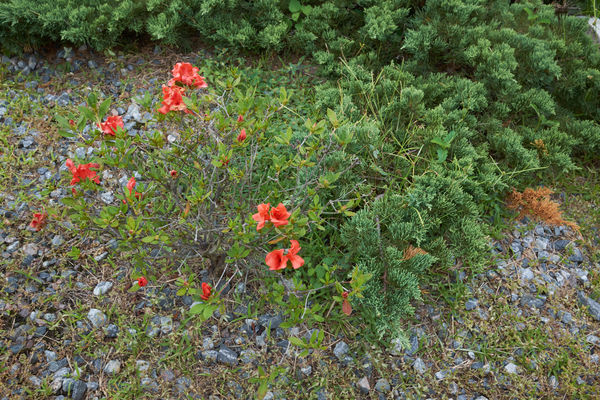Thoughts Around Automated vs. Manual Functions
Aug 9, 2020 19:37:06 #
Ysarex
Loc: St. Louis
selmslie wrote:
Your stated, "my exposure goal is to fully utilize the sensor in my camera." That's one of the mantras of ETTR.
So yes, you were using ETTR. What else could you have possibly meant?
So yes, you were using ETTR. What else could you have possibly meant?
I meant what I said. And I don't use ETTR. Just because I share a goal with a group doesn't automatically make me part of the group. I thought you were an engineer. You didn't learn any basic logic? Christians believe it's wrong to lie and cheat. I believe it's wrong to lie and cheat. Therefore I must be a Christian. No. And neither is ETTR part of my thought process or practice.
So you happy now. I expose the sensor in my camera to get the raw file I want. My camera's would always set a different exposure than the one I set. I mostly use my cameras in P, S and A modes and I get the exposure I want.
Because I especially like my Fuji cameras I avoid using full manual since it restricts control access and is less precise than using P and A modes.
Aug 9, 2020 19:50:48 #
Ysarex wrote:
I meant what I said. And I don't use ETTR. Just be... (show quote)
So what does "my exposure goal is to fully utilize the sensor in my camera" really mean?
How does a normal exposure of a low DR scene fail to achieve your goal?
Here are two images of a low DR scene taken at different exposures and adjusted in post processing. They are not beautiful images. The only adjustments in post were to set them both to Daylight WB and to move the Exposure slider for the second image one stop to the left.
Does the first one fail to "fully use the sensor"?
Or are you just blowing smoke?
Aug 9, 2020 20:16:12 #
Ysarex
Loc: St. Louis
selmslie wrote:
So what does "my exposure goal is to fully utilize the sensor in my camera" really mean?
It means what it says. The sensor in the camera has a recording capacity. My exposure goal is to expose the sensor to use it's full recording capacity. If circumstances (low-light, need for high shutter, etc.) make that impossible then my goal becomes to use as much of the sensor's capacity as the circumstance permits.
selmslie wrote:
How does a normal exposure of a low DR scene fail to achieve your goal?
I have no idea what you mean by "normal exposure." For me a normal exposure is an exposure of the sensor that utilizes the sensor's full recording capacity.
Aug 9, 2020 21:31:18 #
Ysarex wrote:
I have no idea what you mean by "normal exposure." For me a normal exposure is an exposure of the sensor that utilizes the sensor's full recording capacity.
In this case it was an exposure at EC+0. The second exposure was at EC+1.
If you can’t see a difference between the two images then “fully utilize” provided no benefit. In other words, you don’t know what you are talking about.
Aug 9, 2020 21:56:25 #
A narrow range scene provides some exposure latitude. Known phenomenon, but worthy of a shrug and nothing more.
Tempest in a teapot. When discussing metering there’s nothing to discuss concerning scenes for which the interpretation of the metering data is not in the least bit critical. Apparently some things really are too simple for an engineer to grasp.
If all you have is a hammer, everything looks like a nail. If all you have is a lawyer, everything looks like a vulnerability to liability. If all you have is an engineer, everything is a complicated pasture patty.
Aeronautical engineers can easily prove that bumble bees cannot fly. Kodak engineers can prove that photography is a hoax ... cannot possibly work.
Tempest in a teapot. When discussing metering there’s nothing to discuss concerning scenes for which the interpretation of the metering data is not in the least bit critical. Apparently some things really are too simple for an engineer to grasp.
If all you have is a hammer, everything looks like a nail. If all you have is a lawyer, everything looks like a vulnerability to liability. If all you have is an engineer, everything is a complicated pasture patty.
Aeronautical engineers can easily prove that bumble bees cannot fly. Kodak engineers can prove that photography is a hoax ... cannot possibly work.
Aug 10, 2020 01:17:08 #
Ysarex
Loc: St. Louis
selmslie wrote:
In this case it was an exposure at EC+0. The second exposure was at EC+1.
So you're saying that an exposure taken at EC+0 is a "normal exposure." But you just said; "So far as raw capture is concerned, the only cardinal sin is to not blow the non-specular highlights that you want to preserve. For that we are better off relying on highlight warnings, Zebra or highlight weighted metering."
And then you said; "The camera meter has no judgement. It can very quickly come up with the wrong exposure."
And then you said; "The camera's meter does not provide a technically correct exposure. It provides an opinion based on an algorithm."
Sounds to me like you're a very confused troll who doesn't know what "normal exposure" means. Troll on.
Aug 10, 2020 06:14:06 #
Ysarex wrote:
So you're saying that an exposure taken at EC+0 is... (show quote)
It sounds to me that you are very frustrated by your inability to explain what you mean by, "my exposure goal is to fully utilize the sensor in my camera."
I was going to prepare another exhibit for you but the sun is not up yet so here is some information from The Exposure Latitude of a Digital Camera and Comparison to Film. It's an interesting article among many offered by people who really understand the subject.
Roger Clark begins the article with the definition, "Exposure Latitude: The amount of overexposure or underexposure used in acquiring an image (e.g. with a given type of film or a digital camera) that can still produce acceptable results."
The article supports my previous comments and includes a demonstration using a Canon 1D Mark II and a Mackbeth ColorChecker exposed in full sun over a range from the recommended meter reading +6 stops (blown highlights) to -11 stops (noisy). Each raw capture was developed from raw to equalize the effect of the exposure differences. Anyone with a little time and curiosity can replicate these tests using their own camera.
What is relevant to this discussion is that the one exposed at +1 stop:
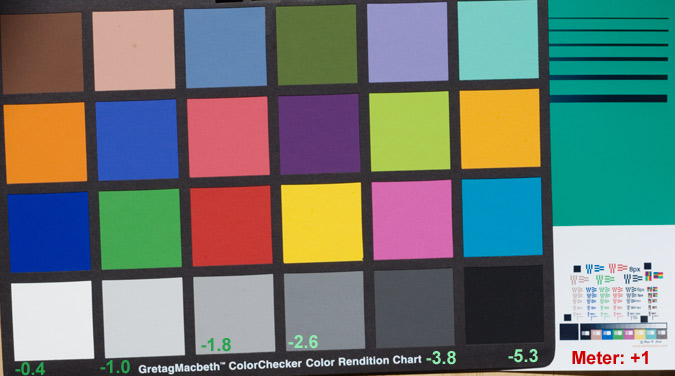
and the one exposed at -1 stop:
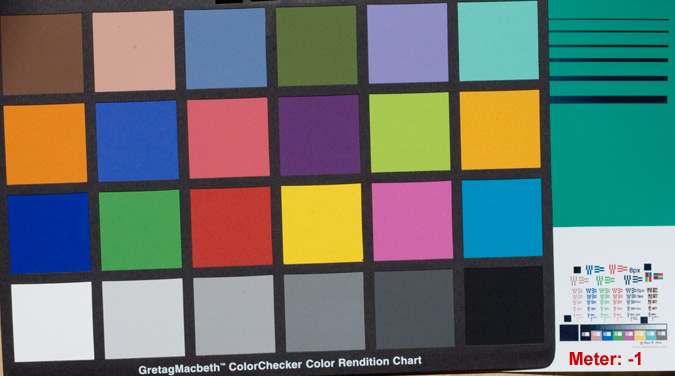
are virtually indistinguishable.
In other words, for a scene with a narrow DR and a camera with a wide DR, exposure is not critical. You may not need to go to extremes with ETTR or your goal to "fully utilize the sensor" when you are using raw capture. Getting the exposure "right" is a pointless exercise. Close enough is not just for horseshoes and hand grenades.
Of course, shooting in low light at high ISO is a different matter. That's when you need to be more careful because high ISO narrows the camera's DR.
And JPEG exposure is more important for reasons I have already covered.
Aug 10, 2020 10:03:39 #
There is no single answer to this question, even for me, a single person... /Generally/, I shoot in Aperture Priority mode, selecting aperture & ISO, letting the camera pick the shutter speed. I use back-button focus, which gives me continuous mode focus as long as I hold the button, and focus lock when I let go. I also generally use TTL when I am shooting with a flash.
That said, based on the type of shooting I am doing, I use exposure comp a lot and flash comp a bit. I also use Shutter Priority /and/ full-manual some of the time. I /rarely/ use auto-ISO, but do occasionally.
Mostly, as a forensic photographer, I am most concerned in what will most efficiently allow me to capture the details of a scene in the least amount of time. Over years of experience, I know when I can use the automatic modes with success, and when I need to override what the camera thinks to get the image I need. While accuracy and detail is my primary concern, speed is often a concern, so anything that makes me more efficient is embraced. (For what it’s worth, I work primarily at night, and I push the limits of the gear at times.) Yes, I “chimp” pretty regularly - especially when I am pushing the equipment. I can’t afford not to... I also switch to full manual (including flash & even manual focus) when that’s what I need to do to get the image I need.
The main thing that I try to teach my techs is that they need to /learn/ their equipment, and then /trust/ it, but also to know how to compensate for when we need something different from what the camera expects.
I tell the average patrolman to store his camera in “P” (I teach them the visual cue that it means “Patrol Mode”.), so that when they have a fast breaking situation in front of them, a quick grab-and-snap will /probably/ result in a useable image...
Shooting recreationally is a totally different ball-game, however, I still capitalize on the ability of the camera to “automagically” adjust to get what I want. The way my mind works, and the way I have shot for so long, I automatically think in terms of AP mode + exposure comp, but I also know when it’s time to “switch gears” and do something different.
So: Automatic modes? Yes! Manual? Yes! Creative weirdness? Yes! Let’s go make some pictures!
That said, based on the type of shooting I am doing, I use exposure comp a lot and flash comp a bit. I also use Shutter Priority /and/ full-manual some of the time. I /rarely/ use auto-ISO, but do occasionally.
Mostly, as a forensic photographer, I am most concerned in what will most efficiently allow me to capture the details of a scene in the least amount of time. Over years of experience, I know when I can use the automatic modes with success, and when I need to override what the camera thinks to get the image I need. While accuracy and detail is my primary concern, speed is often a concern, so anything that makes me more efficient is embraced. (For what it’s worth, I work primarily at night, and I push the limits of the gear at times.) Yes, I “chimp” pretty regularly - especially when I am pushing the equipment. I can’t afford not to... I also switch to full manual (including flash & even manual focus) when that’s what I need to do to get the image I need.
The main thing that I try to teach my techs is that they need to /learn/ their equipment, and then /trust/ it, but also to know how to compensate for when we need something different from what the camera expects.
I tell the average patrolman to store his camera in “P” (I teach them the visual cue that it means “Patrol Mode”.), so that when they have a fast breaking situation in front of them, a quick grab-and-snap will /probably/ result in a useable image...
Shooting recreationally is a totally different ball-game, however, I still capitalize on the ability of the camera to “automagically” adjust to get what I want. The way my mind works, and the way I have shot for so long, I automatically think in terms of AP mode + exposure comp, but I also know when it’s time to “switch gears” and do something different.
So: Automatic modes? Yes! Manual? Yes! Creative weirdness? Yes! Let’s go make some pictures!
Aug 10, 2020 10:18:09 #
selmslie wrote:
... I was going to prepare another exhibit for you but the sun is not up yet ....
The sun is up now so here is some more food for thought.
I took five exposures with a Fuji X100T of a daylight scene separated by one stop of exposure. The only post processing I did was to set Capture One's Daylight WB for each of them and to move the exposure slider to equalize the brightness by whole stop increments.
This camera uses a leaf shutter which is not as precise as a the focal plane shutters used in most digital cameras. This accounts for the slight loss of brightness in the first two images. I made no attempt to refine the Exposure slider adjustment to overcome this.
The five images show that an exposure deviation of +/-2 stops is not apparently detrimental. Feel free to view each image at 100% to see if you can find a loss of quality (noise or irreparably blown highlights) due to the vaiation in exposure.
Incidentally, only the LV 12 image displayed any highlight warnings on the camera. Looking at the results with RawDigger I can see that the white chimneys are blown out in the green channel in the LV 13 image. So LV 14 is the last safe image.
This is why I use LV 15 for all of my broad daylight photography. There is no danger of blown non-specular highlights, even in the JPEG. In this example LV 14 would be pressing my luck with some of my other cameras.
LV 16 ISO 200 1/2000 @ f/8 - Exposure slider+2
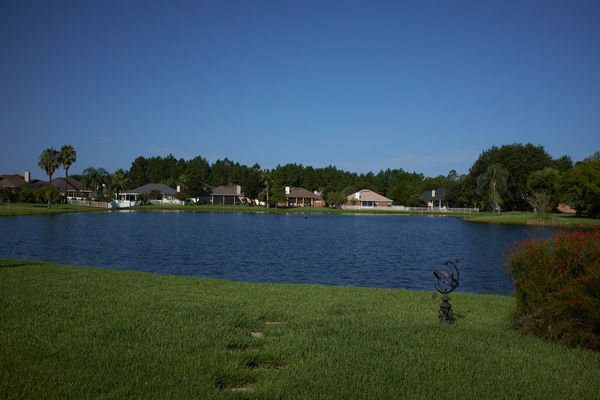
(Download)
LV 15 ISO 200 1/1000 @ f/8 - Exposure slider+1
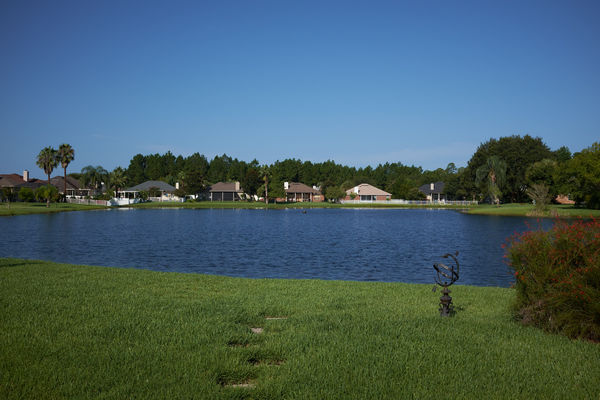
(Download)
LV 14 ISO 200 1/500 @ f/8 - Exposure slider+0
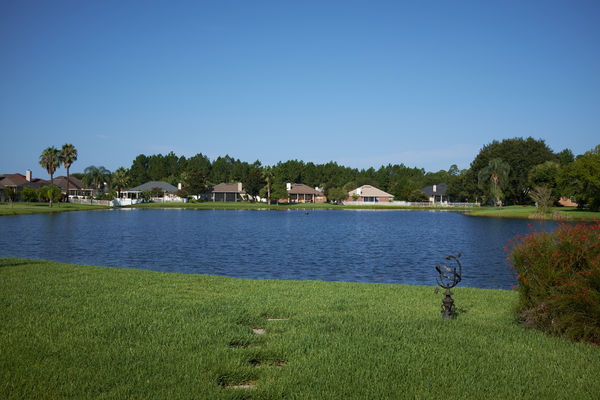
(Download)
LV 13 ISO 200 1/250 @ f/8 - Exposure slider-1
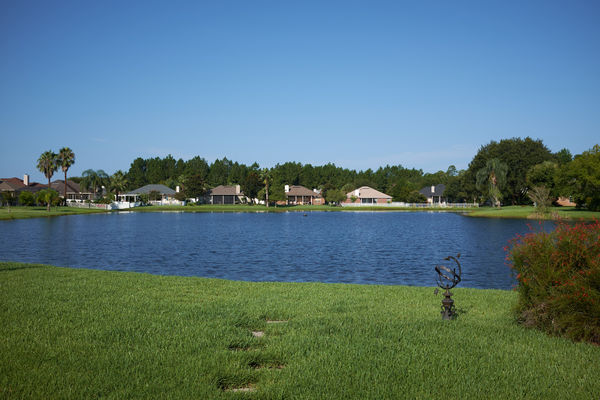
(Download)
LV 12 ISO 200 1/125 @ f/8 - Exposure slider-2
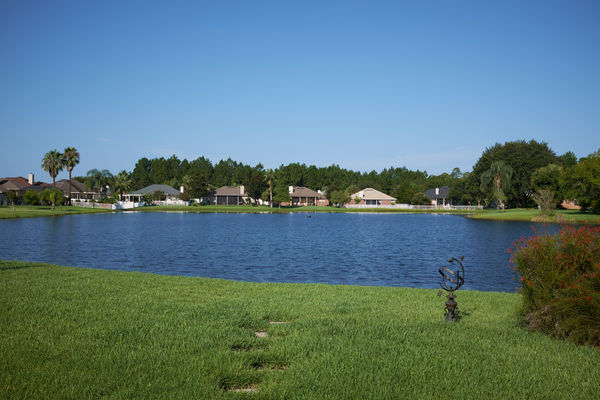
(Download)
Aug 10, 2020 10:18:42 #
I’m embarrassed to say that my brain refuses to register certain camera functions and yet I have been using many cameras to take professionally photos some years back. (Long story there) I have a Canon 90D as my last digital camera ( another story I had posted on this forum just recently) I love the camera and I m trying to get use to the weight with the 18-135 nano lens. Any way I have been using the P mode as I call my (preferences,) with ISO on auto and manually adjusting exposure. I wish I can venture out of the house to use the camera but due to my age 82 and the virus and some health issues I can only be inside the house right now. As always I wish to everyone to stay healthy.
Aug 10, 2020 10:28:53 #
JFCoupe wrote:
When I read that someone shoots full manual, I often wonder how they get to their shutter speed/aperture starting point.
That is also going to depend on the type of photography as well as the specific image I am trying to achieve. Am I going for lots of depth of field (start @ f/8 or some other calculated value based on image depth), or am I trying to stop/blur motion (what motion, how fast, how slow)? Am I trying to pull absolutely maximum detail out of the image (low ISO!) or is this some moonless-night-in-the-forest shot and I need to gather as much light as possible (high ISO!).
If you’re asking for a walk-around “standard”, I keep my camera @ f/8 as my pick-it-up starting point. I also keep it in Aperture Priority mode @ ISO 400. I’m much more likely to reach for the exposure comp dial than I am to go manual shutter...
Aug 10, 2020 10:45:23 #
When people shoot on manual, do they use the built-in camera's reflected light meter or an incident light meter?
Aug 10, 2020 10:58:57 #
MrBob wrote:
Just a little sarcasm Mike, as I said a few posts back... Everyone seems to refer to it as Professional so that meaning kind of sticks around.... 

Indeed. I always have to explicitly state in my classes that “P” is /NOT/ “Professional Mode” (though I do tell the patrolmen that they can think of it as “Patrol Mode”).
Aug 10, 2020 11:00:39 #
Ysarex
Loc: St. Louis
radiojohn wrote:
When people shoot on manual, do they use the built-in camera's reflected light meter or an incident light meter?
Most use the camera's built-in light meter.
Joe
Aug 10, 2020 11:05:25 #
LWW
Loc: Banana Republic of America
radiojohn wrote:
When people shoot on manual, do they use the built-in camera's reflected light meter or an incident light meter?
I use the built in meter, almost always on matrix metering.
I have an incident meter, but haven’t used it in a long time.
If you want to reply, then register here. Registration is free and your account is created instantly, so you can post right away.

